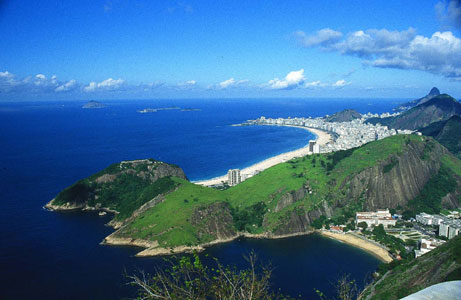
Copacabana Beach - Rio de Janeiro
Until the late XIX century Copacabana was a distant area covered with sand, dunes and shrubs. A smal fishermen´s village concentrated most of the dwellers. According to Copacabana history, the region was originally called Sacopenapã and consisted of Copacabana district all the way to the Lagoon Rodrigo de Freitas. In the mid XXVII’s the name was changed to Copacabana, which in Quichua, a native language from Peru and Bolivia, means: ‘mirante of the blue one’. Copacabana also comes of the term aymara archaic Copakawana and means the one that shoots the precious rock. Copacabana history shows that the region alone was first incorporated in the city of Rio de Janeiro on the 6th of July of 1892, with the opening of the Túnel de Real Grandeza, currently Túnel Velho.
In this occasion in Copacabana history, with the presence of the president, Marshal Floriano Peixoto, the official birth of the historical quarter of Copacabana was marked. This great improvement allowed the train line to be extended until Praça Serzedelo Correia. Later, the street was extended to Leme and Nossa Senhora de Copacabana. The inauguration of the Av. Atlântica along the beach around 1900`s was a major turning point for the history of Copacabana. At that time Copacabana had around 20,000 inhabitants who had sent a demand to the city hall demanding the installation of schools, sanatorium and a playground for the children.
Aviation was in development and the beach of Copacabana was considered an excellent field of landing, not only for its extension of sand, but also for the good conditions of visibility for the pilots. The airplanes, taking off of from the beach, often went on to make piruets in skies downtown.
Another important event was the opening of Copacabana Palace history in 1923. With it, glamour and romance became copacabana trademarks, considered the most sumptuous edifice from the gender in South Amercica and one of the most beautiful hotels in the world.